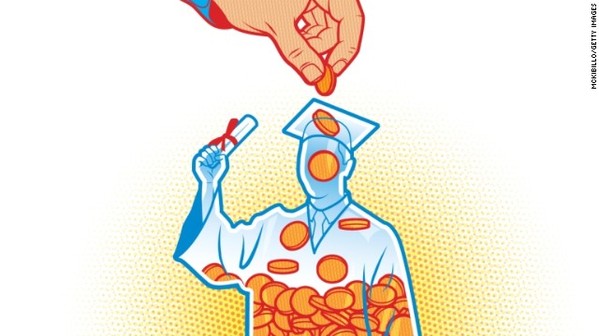 Image Courtesy: bit.ly/1p3LAen
Image Courtesy: bit.ly/1p3LAen Supply and Demand
Like most other things in economics, the real value of a college degree depends on the supply and demand. The gap in average pay between secondary-school degree holders and college graduates is known as the College Wage Premium. When companies require qualified and well trained employees, the demand for university graduates tend to rise which increases the premium. However, when college graduates are more in supply than their less-educated peers, the college wage premium tends to fall or remains stable. Although the requirement for skilled workers varies to some extent among different countries, but this trend is almost similar among most developed nations.
Traditionally businesses recruit the most educated workers and the demand has grown considerably over the last century. But as the supply of graduates has not increased evenly, the college wage premium has not remained stable.
Graduates in Rich Countries
The rise in volume of students attending colleges has been slower in other developed nations than in the US. According to data from the Organisation for Economic Co-operation and Development (OECD), the workers in US from the older generation are more educated than their counterparts in other developed countries. However recent graduates in America are not as distinguished as most of the other nations have managed to catch up in the last decades.
Elena Crivellaro of the University of Venice states that university enrolment from 1990 to 2005 increased by almost 30 per cent in European countries and over 50 per cent in Nordic nations. But the rise in college enrolment in the US was only around 26 per cent. She adds that the labour market in Europe was saturated due to the rapid rise in the number of fresh graduates.
Thus to keep the college wage premium relatively stable throughout Europe, the saturation was countered with munificent minimum wages. During the 2000s, the graduate premiums increased in Britain, Ireland and France, but reduced in Germany, as per Crivellaro. Moreover, the OECD notes that in 2011 graduates in US managed to earn 77 per cent more in a year than their peers who only completed secondary school. This rate was observed to be 57 per cent in Britain, 47 per cent in France and merely 25 per cent in Sweden.
Graduation Gamble
According to Sarah Turner (University of Virginia) and Christopher Avery (Harvard University), the discounted present value of a university degree in the US (net of tuition fees) increased from $US213,000 to $US590,000 for male graduates and from $US129,000 to $US370,000 for female graduates between 1965 and 2008. It should be noted that most of the rise in value occurred before the year 2000. Several studies indicate that much of the rise in inequality for the earlier generation in the US workforce was mostly due to growing premium on higher education.
However, college education may still be a risky venture. In several developed nations, graduates end up paying higher fees for their degrees resulting in higher student debt. The share of US graduates with student debts increased by 25 percentage points between 1993 and 2012. Furthermore, after adjusting for inflation the average debt per borrower also doubled. The financial investment in college education offers rather variable return on investment, although on an average it is rewarding.
The returns depend on a number of factors like the subject of the qualification and the reputation of the college/university. Payscale recently conducted a study that measured the expected return on investment for graduates from around 1,500 higher education institutes. For some of the most prominent institutions like MIT and Caltech, someone with a bachelor’s degree can expect a 30-year return of almost US $2 million. However, the returns diminish significantly for less popular institutes. For example, graduates from the Valley Forge Christian College expect to earn around US $148,000 for their investment.
Overall, a college degree still remains a solid investment and can help graduates in building a lucrative career; however this may vary depending on several factors. Thus potential students should be discerning as there are no guarantees.
 RSS Feed
RSS Feed
